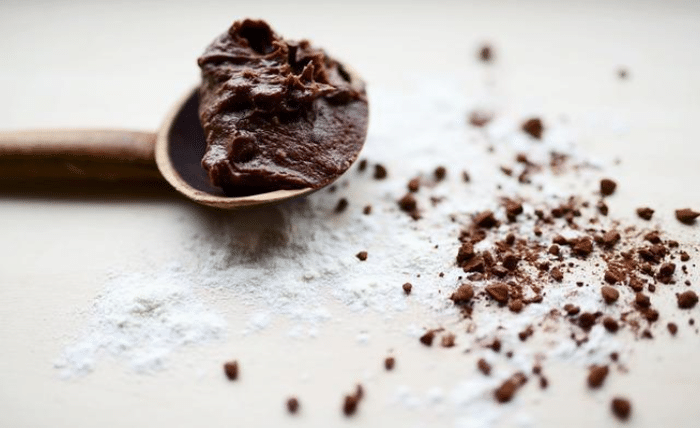
The cost of cocoa increased by 136% between July 2022 and February 2024, with the price per ton on the futures market surpassing $10,000 for the first time on March 26, 2024. While prices escalated rapidly in late 2024, reaching a peak of roughly $12,931 per metric ton, they have since declined by over 30%, falling below $8,000 per ton, which can be attributed to improving weather in West Africa and increased exports from countries like Nigeria. According to the Wall Street Journal, the futures prices for July 2025 were reported at $8,780 per metric ton.
Although cocoa prices are moderately lower, they remain elevated amid a global supply shortage, forcing chocolate manufacturers to adapt in order to protect their profit margins and market share. Leading chocolate brands must select one of the following strategies:
- Absorb the cost increase: Faced with higher production costs, companies must assimilate these increases to avoid alienating customers, which is often not sustainable in the long run. This is realized by using reserve funds and hedging instruments.
- Reformulate recipes: Chocolatiers can reduce the cocoa content or replace a portion with alternative ingredients, such as vegetable fats, to maintain taste profiles while reducing the cost of raw materials.
- Pass the costs to consumers: Higher financing costs and delays in passing price increases on to customers can affect net profit. Retail prices and pack sizes are adjusted upward to transfer the cost burden.
Production is expected to increase by 11% in 2025, but it won’t be sufficient to rebuild depleted inventories, and pricing will pick up meaningfully. Reformulating recipes allows brands to navigate challenges while preserving margins, market positioning, and product appeal.
Real Chocolate May Soon Become A Rare And Expensive Treat
Manufacturers can’t produce chocolate without cocoa, so they’re entirely dependent on the wholesale cocoa market for their supply chain. Confectionery producers purchase cocoa in several forms, including but not limited to cocoa beans, cocoa liquor, cocoa butter, and cocoa powder. Leading brands like Hershey’s, Mars, and Nestle acquire cocoa in massive quantities, namely thousands of tons annually. Even smaller artisanal chocolate makers need wholesale suppliers, although in smaller volumes, since retail cocoa prices would make production unfeasible from an economic standpoint.
Bean-to-bar makers are actively exploring and considering various substitutes for cocoa and cocoa butter to avoid alienating price-sensitive shoppers by keeping shelf prices stable. Carob presents an alternative. Carob trees produce pods that are long, flat, and slightly curved, often described as being banana-shaped. The pods can be processed to create a powder that can be used as a substitute for cocoa powder in various recipes, but carob-based confectionery doesn’t taste as good as real chocolate. Substitutes such as sunflower seeds and fava beans are becoming more popular among the health-conscious.
Climate, labor, economics, and global demand are putting pressure on the global supply chain, so chocolate could become a luxury item in the near future because of how expensive it can become. Cocoa is a fragile crop, and in recent years, harvests in Ghana and Ivory Coast have been affected by drought, shifting weather patterns, and crop disease. Chocolate consumption is climbing, notably in parts of Asia, and this puts pressure on the available cocoa supplies – when demand exceeds supply, prices tend to rise.
The Latest Iteration Of Alternatives To Chocolate Moves Beyond Simple Replication
Voyage Foods advances cocoa substitutes using a wide array of ingredients like grape seeds, sunflower protein, and palm oil to address the rising cost and supply issues of traditional cocoa. The food innovation company that leverages sustainably sourced, upcycled ingredients is opening a manufacturing plant in Ohio for its cocoa-free chocolate and has recently partnered with Cargill to meet global demand for sustainable confectionery. Since chocolate is present in numerous products, Voyage Foods has a range of cocoa-free flavors, styles, and applications, such as cocoa-free chips with a sweet and round flavor profile.
Traditional chocolate recipes merge cocoa mass, sugar, milk powder, cocoa butter, and even vanilla, whereas contemporary formulations incorporate carob powder and shea- or palm oil-based cocoa butter alternatives to reduce reliance on cocoa ingredients. Planet A Foods, for instance, has decided on sunflower seeds as the main ingredient in their cocoa powder alternative. Sunflower seeds are generally considered abundant, meaning there are millions and millions of tons on the market. Of course, consumers don’t get the same burst of chocolate flavor they might expect from treats.
Finally, yet importantly, Nukoko uses a controlled biotransformation and fermentation process to transform fava beans into a chocolate-like product, having opted for a key ingredient they can source locally. The chocolate is naturally rich in protein, fiber, and antioxidants, not to mention that it contains less sugar than standard chocolate. Getting consumers to embrace alternatives is tough because substitutes, no matter how well-engineered, don’t trigger the same sensory satisfaction that real chocolate does.
The Pluses And Minuses Of Using Non-Cocoa Ingredients In Chocolate
Chocolate substitutes, which can range from sweet and flavorful ingredients to specific chocolate products, provide several compelling advantages to manufacturers, namely reducing production costs and lessening exposure to volatile cocoa markets. These alternatives also improve supply chain resilience by diversifying raw material sources and addressing risks associated with climate change, disease outbreaks, and geopolitical disruptions. Price isn’t the only reason consumers are seeking cocoa-free chocolate. More and more people are eating a plant-based diet for health benefits, ethical concerns about animal welfare, and environmental considerations.
In spite of these benefits, using non-cocoa ingredients in chocolate presents notable drawbacks. To be more precise, alternative ingredients don’t have the same depth of flavor and mouthfeel characteristic of genuine cocoa, which can erode brand loyalty, and regulatory restrictions in some areas limit available cocoa butter alternatives, complicating formulation efforts and labeling requirements. Chocolate substitutes can’t be processed with conventional equipment, meaning they require specialized techniques. For example, sunflower seeds and oats require fermentation, after which they’re combined with fat and sugar.
In conclusion, a judicious approach, that is, one that balances traditional cocoa with carefully selected substitutes, is key to capitalizing on the benefits of alternatives without sacrificing brand equity or quality standards.



